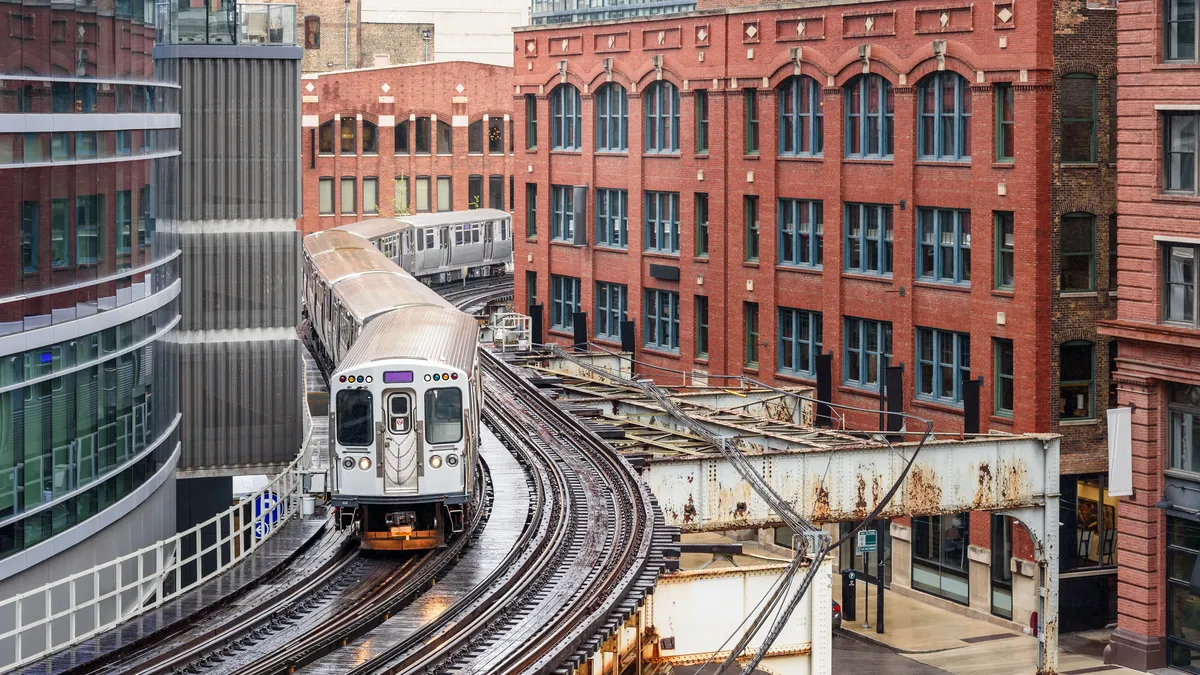Cities are funding transit projects they otherwise couldn’t afford with money from the bipartisan infrastructure law, pandemic-era economic stimulus programs and other federal sources, said Yonah Freemark, principal research associate at the Urban Institute and author of a February analysis on funding transit-oriented housing development. “But what the federal government does not do is provide any specific resources for the housing elements of these projects,” he said.
Instead, housing and transportation development efforts are usually siloed, Freemark said. For example, the bipartisan infrastructure law doesn’t allow transportation funds to be used directly on building housing.
That can complicate transit-oriented development, which links housing and transportation infrastructure to create dense, walkable, mixed-use cities that are less dependent on polluting vehicles.
Through interviews with city officials across the country, Freemark learned that transit leaders were often excited about transit-oriented development. However, they indicated it is hard to make such development a reality, he said. A major takeaway from Freemark’s conversations is that transit agencies “just [don’t] have the land resources on hand to make it feasible,” he said.
Freemark’s analysis found that housing growth was higher near new transit stations constructed between 2000 and 2019 than in non-transit-accessible neighborhoods in the same urban area over the same period. Still, housing is much more likely to be built far from transit, where land and housing costs are lower. Between 2000 and 2019, more than eight times as many housing units were built far from transit than nearby, according to the analysis.
While brainstorming ways municipalities could more easily integrate housing and transit development, Freemark came up with an idea he referred to as a “dedicated land acquisition program,” which could be funded by the federal government.
The Biden administration has already tried to make transit-oriented development easier by allowing transit agencies to repurpose property initially obtained with federal assistance for housing development. But Freemark believes the federal government should link transit-focused land investments with housing development so that “essentially it can fund both at the same time,” he said. For instance, funding for land acquisition for housing could be awarded to cities in conjunction with competitive capital investment grants, which award nearly $4 billion annually for municipal public transit projects.
Freemark has spoken to some government officials and members of Congress about the federal funding idea, and there’s been “a lot of interest,” he said.
He pointed out that besides providing the benefits of housing development, more support for transit-oriented development would make public transportation more effective. After all, people who live near transit are much more likely to use it. “If the federal government wants to make sure to maximize the value that communities are getting out of new transit lines [funded by the government], then one of the best ways to do that is to [build] a lot of housing in the areas surrounding those transit lines,” Freemark said.
Though Freemark believes that federal funding could facilitate more transit-oriented development, he emphasized that local leaders don’t need to wait for federal dollars to act. “The reality is that a lot of the solutions here could be state and local governments doing the exact same thing,” he said, adding that transit agencies themselves could work to implement transit-oriented development.
Seattle is one city working on transit-oriented development plans. The area’s Sound Transit has completed a few transit-oriented development housing projects and has several others in the works. The transit agency plans to pair light rail expansion with apartment development. Though some parts of the plan are not yet approved, Sound Transit estimates that more than 1,000 apartments could be built next to just three of the planned light rail stations. That housing could serve as a significant boost to the city’s efforts to pair housing and transit access together.











